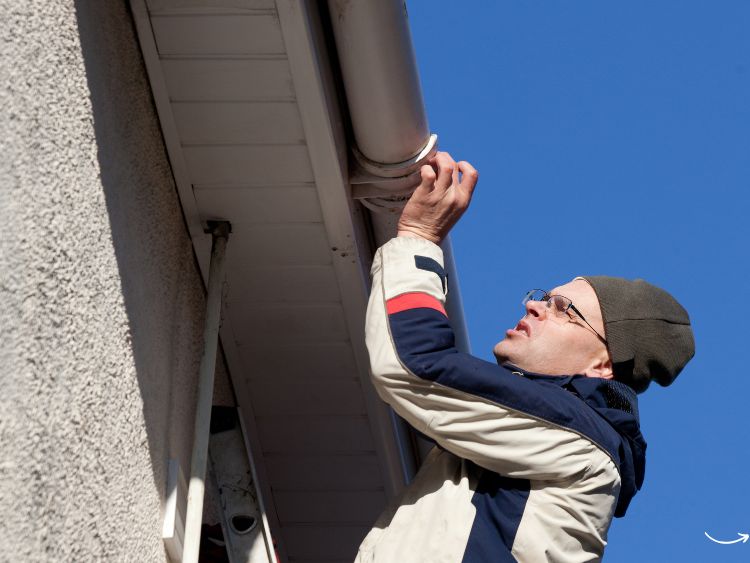Roofing and gutter repair might seem like a daunting task, but with the right information, it can be much more manageable. Whether you’re a seasoned DIY enthusiast or a homeowner looking to hire professionals, understanding the basics of roofing and gutter maintenance is crucial. This comprehensive guide covers everything from identifying common issues to implementing effective solutions.
Hey there, homeowners! Have you noticed a leak in your roof or overflowing gutters during a rainstorm? Don’t fret! Roofing and gutter repair is essential for maintaining the integrity of your home. Let’s dive into the world of roofing and gutter repair to keep your home in top shape.
Understanding Roofing and Gutter Repair
Why Roofing and Gutter Maintenance is Important
Roofing and gutter systems are vital components of your home’s structure. They protect your home from water damage, ensure proper drainage, and contribute to its overall aesthetic appeal. Neglecting maintenance can lead to costly repairs and potential structural damage.
Common Roofing Issues
- Leaks and Water Damage: Water infiltration can cause significant damage to the roof’s structure and interior of your home.
- Missing or Damaged Shingles: Shingles protect your roof from the elements. Missing or damaged shingles can expose your roof to water and wind damage.
- Roof Sagging: This is often a sign of structural issues and requires immediate attention.
- Moss and Algae Growth: These can degrade the roofing material and cause leaks.
Common Gutter Issues
- Clogged Gutters: Leaves, twigs, and debris can block gutters, causing water overflow and damage.
- Sagging Gutters: Over time, gutters can pull away from the house, leading to improper drainage.
- Leaking Gutters: Cracks and holes in gutters can lead to water damage to the home’s foundation.
- Improper Slope: Gutters must be sloped correctly to ensure proper water flow towards downspouts.
Steps for Roofing Repair
Inspecting the Roof
- Safety First: Always use a sturdy ladder and safety gear when inspecting your roof.
- Check for Damage: Look for missing, cracked, or curling shingles, and inspect flashing around chimneys and vents.
- Examine the Attic: Look for signs of water damage or leaks in the attic.
Repairing Minor Roof Damage
- Replacing Shingles: Remove damaged shingles and replace them with new ones, ensuring they are securely fastened.
- Fixing Leaks: Apply roofing cement to small leaks and cover with a piece of roofing fabric.
- Sealing Flashing: Use roofing sealant to repair cracks or gaps in the flashing around chimneys and vents.
When to Call a Professional
- Major Damage: Extensive damage, such as large leaks or structural issues, requires professional intervention.
- Complex Repairs: Repairs involving significant roofing components or heights should be handled by professionals.
Steps for Gutter Repair
Inspecting the Gutters
- Safety Precautions: Use a ladder stabilizer and gloves when inspecting gutters.
- Check for Debris: Remove any leaves, twigs, or debris blocking the gutters.
- Examine for Damage: Look for cracks, holes, or sections pulling away from the house.
Cleaning and Maintaining Gutters
- Regular Cleaning: Clean gutters at least twice a year to prevent clogs.
- Install Gutter Guards: These help keep debris out while allowing water to flow freely.
- Ensure Proper Slope: Adjust the gutter slope to ensure water flows towards the downspouts.
Repairing Gutter Damage
- Fixing Leaks: Use gutter sealant to repair small cracks or holes.
- Reattaching Sagging Gutters: Secure gutters back in place with gutter hangers or brackets.
- Replacing Damaged Sections: Replace any sections of the gutter that are too damaged to repair.
When to Call a Professional
- Extensive Damage: Significant damage, such as large holes or sagging gutters, may require professional repair.
- Complex Repairs: Repairs involving heights or complex gutter systems should be handled by professionals.
Preventive Measures
Regular Inspections
- Roof Inspections: Inspect your roof at least twice a year, in spring and fall, and after any major storm.
- Gutter Inspections: Check gutters regularly for clogs, damage, and proper alignment.
Seasonal Maintenance
- Spring and Fall Cleaning: Clean gutters and inspect the roof for any damage that may have occurred over the winter or summer.
- Winter Prep: Ensure gutters are clear before winter to prevent ice dams, and check the roof for loose or missing shingles.
FAQs
How often should I inspect my roof?
Ideally, you should inspect your roof twice a year, in the spring and fall, and after any significant weather event.
What are the signs that my gutters need repair?
Common signs include water overflowing during rain, sagging gutters, visible cracks or holes, and water pooling around your home’s foundation.
Can I repair my roof and gutters myself?
Minor repairs can often be handled by homeowners, but major damage or repairs involving heights and complex systems should be left to professionals.
How can I prevent gutter clogs?
Regular cleaning, installing gutter guards, and ensuring proper gutter slope can help prevent clogs.
What should I do if I find a leak in my roof?
If you find a leak, apply roofing cement to the affected area and cover it with roofing fabric. For major leaks, contact a professional roofer.
Summary
Roofing and gutter repair are crucial for maintaining the integrity and value of your home. Regular inspections, timely repairs, and preventive maintenance can save you from costly damage and ensure your home remains safe and dry. Remember, while minor repairs can be handled on your own, don’t hesitate to call professionals for more extensive damage.
Authoritative Links
With these tips and information, you’re well on your way to mastering the art of roofing and gutter repair. Happy fixing!







